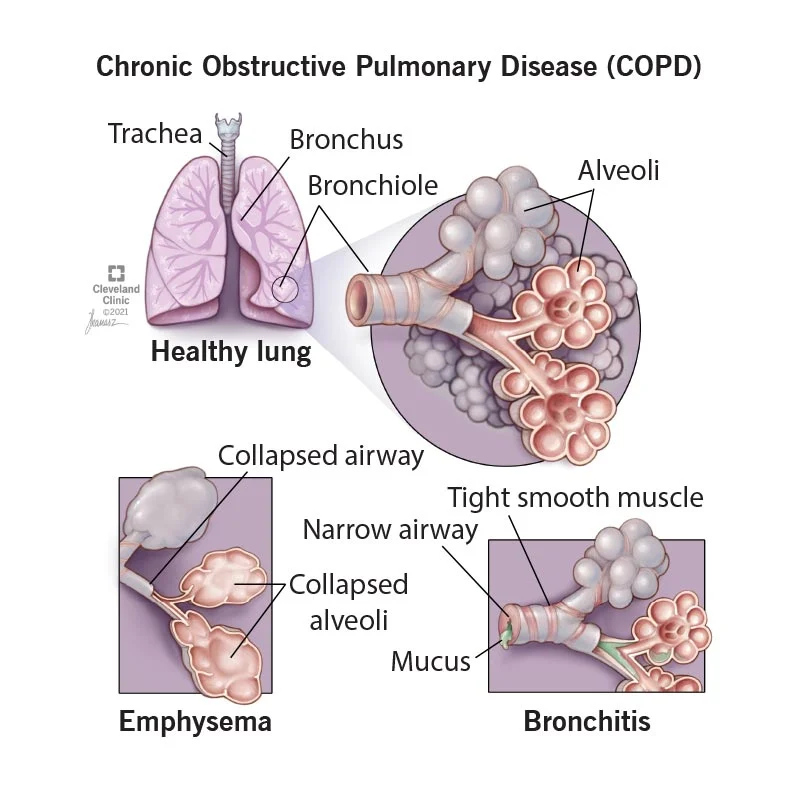 |
| Obstructive pulmonary disease may also be associated with optic neuropathies through cardiac disease since these diseases share several risk factors and pathophysiological processes. Photo: Cleveland Clinic. Click image to enlarge. |
Retinal microvasculature health holds clues to the body’s function beyond the eye. Experts say that understanding the status of the vasculature may help to diagnose systemic disease and identify possible associations between systemic and ocular diseases. One such association may exist between obstructive pulmonary disease and optic neuropathies. In a study published recently in Investigative Ophthalmology & Visual Science, researchers used a combination of OCT and angiography to identify any macular damage in non-glaucomatous individuals with and without impaired pulmonary function. They reported that obstructive pulmonary disease may be a risk factor for glaucoma.
The prospectively enrolled 70-patient cohort underwent IOP and visual acuity measurements, OCT, angiography and pulmonary function testing. Patients were diagnosed with obstructive pulmonary function is their first second of forced expiration (FEV1) to forced vital capacity (FVC) ratio was below 70%. A total of 30 patients with obstructive pulmonary function were identified, all of whom were significantly older than those with normal pulmonary function (n=40).
The researchers found that in patients with obstructive pulmonary function, macular vessel density was significantly decreased in all sectors, except the nasal sector (after adjusting for age, IOP and average ganglion cell inner plexiform layer thickness). Macular vessel density demonstrated a significant linear association with FEV1/FVC ratio. Severity of pulmonary obstruction, FEV1, was linearly associated with ganglion cell inner plexiform layer thickness in patients with obstructive pulmonary function.
Damage to the nerve fiber layers and peripapillary vasculature has been reported in obstructive pulmonary disease. The generally reduced vessel densities of obstructive pulmonary function patients compared with normal pulmonary function patients in this study “may be a result of systemic pathophysiologic changes in the form of vascular structure loss and vasoconstriction in obstructive pulmonary disease,” the researchers noted in their Investigative Ophthalmology & Visual Science paper.
Though the mechanism by which pulmonary disease and optic neuropathies are related is still unclear, the researchers wrote that they “believe the study presents findings that help establish obstructive pulmonary disease as a possible risk factor for optic neuropathies like glaucoma” since the degree of airway obstruction correlated with reductions in macular vessel density.
Lee JS, Bae B, Bae H, et al. Alterations of macular structure in non-glaucomatous subjects with obstructive pulmonary function. Invest Ophthalmol Vis Sci 2023;64:11:24. |

